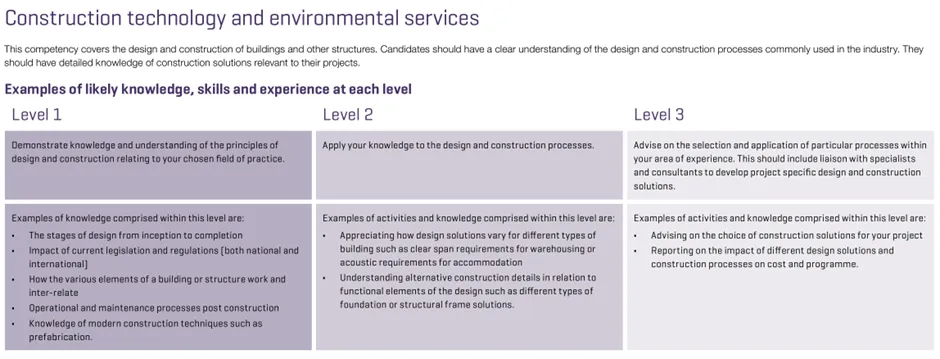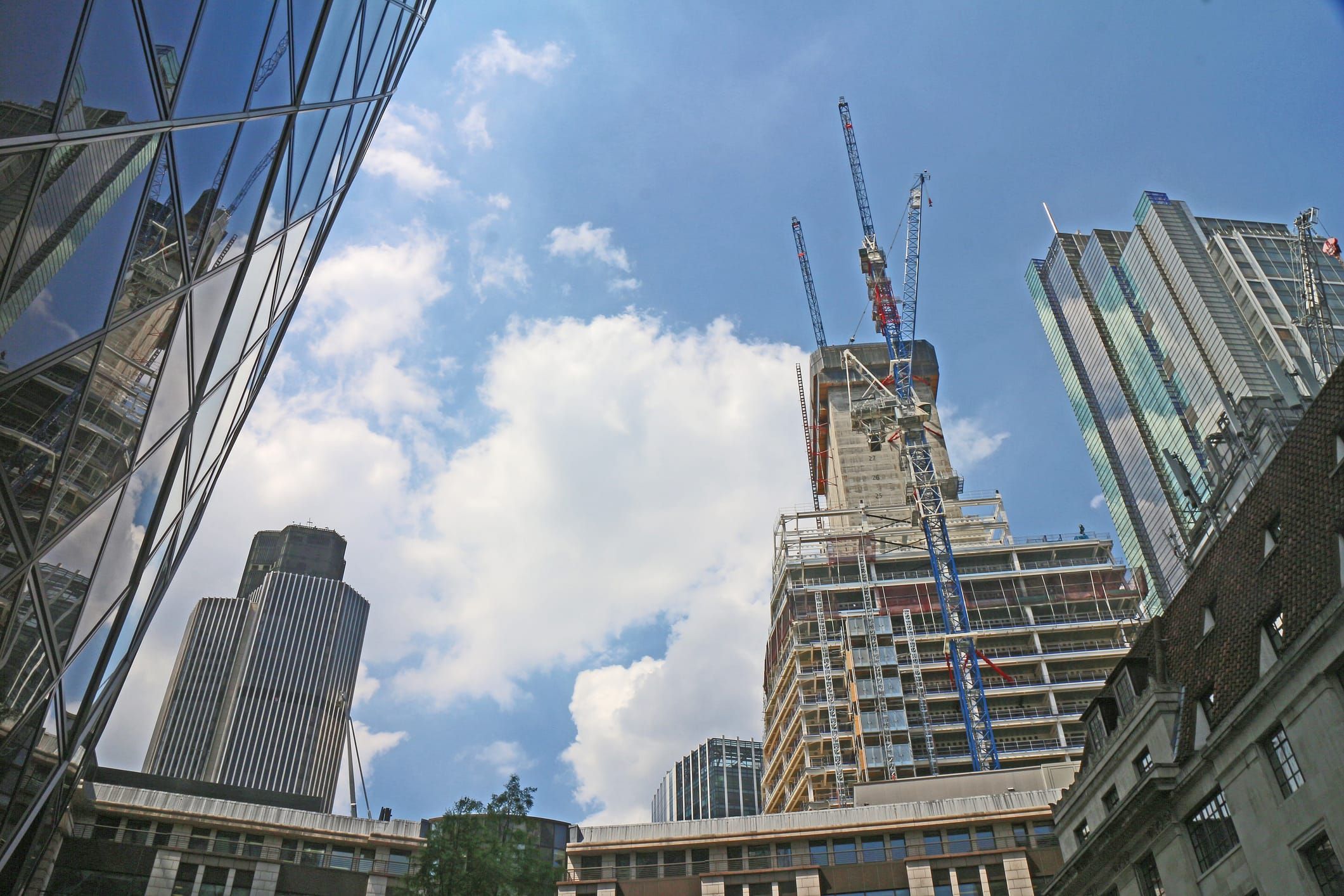
RICS APC: Construction Technology and Environmental Services
As the mid-September 2024 submission window for RICS APC candidates sitting in 2024 Session Two is nearly upon us, we wanted to do a mini-series focused on technical competencies within the Quantity Surveying and Construction pathway guide.
We will do this by writing a five-minute article on each of the six core technical competencies which for the pathway requirements for quantity surveyors. The intention is to give you some things to think about as you ready your experience record for submission and prepare for interview. Whilst the article is RICS APC focused, the content will still be relevant to any construction professional looking to refresh or advance their knowledge in this area.
This week’s focus is construction technology and environmental services which is a competency that a is a critical enabler to other technical competencies: you need to be competent in construction technology if you are to be competent in quantifying and costing construction work.
The Definition
Construction technology and environmental services ‘covers the design and construction of buildings and other structures. Candidates should have a clear understanding of the design and construction processes commonly used in the industry. They should have detailed knowledge of construction solutions relevant to their projects.’
A snapshot of the competency description from the pathway guide is provided at Figure 1, where you will see what is required of you at level 1, level 2 and level 3.

Figure 1
At your APC assessment, you need to demonstrate that you have achieved level 3 competency. Remember: level 3 is advising; level 2 is doing; and level 1 is knowing. What constitutes advice? The Oxford English Dictionary defines advice as ‘guidance or recommendations offered with regard to prudent future action’.
For me, in the context of the APC, this means there was an issue, and you used your professional judgement to understand the issue and recommend to your client or your employer as to the action which should be taken.
Let’s explore this further with some hypothetical examples of construction technology and environmental services.
Level 3, Bullet 1
At level 3, you are required to demonstrate that you can competently ‘advise on the choice of construction solutions for your project’.
As a quantity surveyor with project experience, you will have numerous examples where design is developing, and different solutions are being considered. There are numerous reasons for this: maybe you are managing the design to a budget; maybe the current design doesn’t comply with the contract requirements and alternative solutions are being considered; or maybe your client is looking to make a change and has asked you for proposed solutions.
In all these situations, your role as a quantity surveyor is to give sound and reasoned advice on the valuation of the different options. This means you need to understand the design, the construction methodology and it’s impact on the final building design (environmental services) to give a valuation that considers the whole of the change.
As an example, say there is a need to change the window type. It might not be enough to simply omit the cost of one window and add the cost of another. You would need to think about whether any re-design costs are required, are some of the windows already manufactured or installed in which case costs would be impacted and, most crucially, what impact will the change have on other building elements? Does this mean less or more solar gain, less or more daylighting, does the window need electrical services to operate.
You are not expected to be competent as an architect or an engineer, however you are expected to appreciate the impact of different design solutions and demonstrate how you considered these in making a valuation of different construction solutions.
Someone may make a decision based on your advice so it needs to be at the required standard.
Level 3, Bullet 2
At level 3, you are required to demonstrate that you can competently ‘report on the impact of different design solutions and contractor processes on cost and programme’.
There is some overlap between this and the previous bullet, so I will distinguish this by focusing on demonstrating design-to-cost competency. For me, it never bodes well when a quantity surveyor doesn’t realise a tender package is over budget until the tender returns come in. There may be mitigating circumstances, but this tells me that design-to-cost checking was not happening. The consequence? You lose programme time re-designing and / or going back out to tender, or you place the package at a loss because you bought more than you needed.
A design-to-cost reporting mechanism is not overly difficult to implement. You need to know the key commodities that will drive the outturn cost of a package. A simple example is reinforcement where the tonnage of steel reinforcement is an obvious critical determiner. You would need to know the quantities on which your budget is based. A simple total tonnage might be sufficient, or you might carve this up if rates become disproportionately higher at certain sizes.
Once this is setup, you would run checks through the design development process to indicate where the design is not in line with budget and allow the project team to challenge this before the tender design is concluded.
If a candidate is demonstrating this then they are reporting on different design solutions and, as well as mitigating the cost of that package, they are mitigating the risk to the overall programme.
This is crucial advice that allows cost to be controlled before it is incurred and programme managed before time is lost.
Final Reflections
In both examples, you need to demonstrate that you understand the relationship between construction design and construction costs. You should have knowledge of the different options available and be able to explain how your cost advice considered the whole impact of a change rather than just the basics of a change.
There is an element of professional judgement needed because the whole impact of the change will not always be apparent. You will need to make enquiries with your colleagues, rely on your own knowledge and experience, or maybe do some research as to different products or solutions.
As an assessor I would be looking for you to demonstrate this competence with some strong examples showing how you gave sound and reasoned advice. I would test around this to see if you considered the whole impact of the change.
In next week’s article, we will look at contract practice. Keep an eye out for that and, in the meantime, enjoy the rest of your week!
Bringing The science of Quantik® to you
p.s. If anything in this article, or any of our articles, resonates with a challenge you are experiencing, check out our ‘Bringing The science of Quantik® to you’ initiative where we offer a tailor-made session aimed at helping you tackle your project or business challenge (link below).
Form: https://form.jotform.com/241425931072350

THE SCIENCE OF QUANTIK™
Publications
We publish insights through our LinkedIn newsletter, titled “The science of Quantik”, which are light bites of information covering news and insights relating to the construction industry and quantity surveying.
LinkedIn